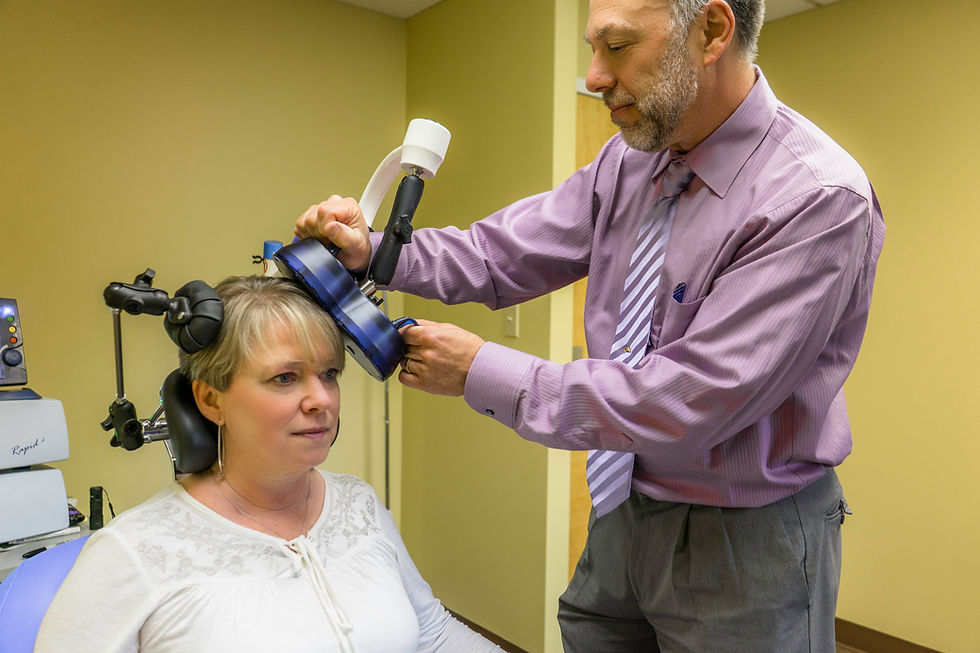Debunking Myths About TMS Therapy: What You Need to Know

Transcranial Magnetic Stimulation (TMS) therapy is gaining recognition as an effective treatment for various mental health conditions, including depression and anxiety. However, misconceptions about TMS persist, causing some people to hesitate or overlook this treatment option. In this blog, we’ll address common myths about TMS therapy to give you a clearer picture of what it is—and isn’t.
Myth 1: TMS Therapy is Painful
One of the most common myths about TMS therapy is that it’s painful. In reality, TMS is a non-invasive procedure, and most patients only feel a light tapping on the scalp, or some muscle twitching of the eyebrow or jaw during the session. Other side effects, if they occur, are generally mild and may include temporary scalp discomfort or slight headaches, which typically subside after the first few sessions.
Myth 2: TMS Therapy is Only for Severe Depression
While TMS therapy is often recommended for individuals with treatment-resistant depression, it’s not limited to severe cases. TMS can benefit a wide range of patients, including those with moderate depression and other conditions like anxiety and obsessive-compulsive disorder (OCD). Because it targets specific brain areas related to mood regulation, TMS has proven effective for many who haven’t found relief through other methods.
Myth 3: TMS Therapy Requires Medication
Most patients who undergo TMS are already on an antidepressant medication, and are encouraged to remain on them during the treatment. Tms itself is entirely medication-free, making it ideal for those who prefer non-pharmacological treatments or have experienced side effects from medications. TMS doesn’t interact with any medications and can be safely used alongside other treatments, like talk therapy, offering a flexible and holistic approach to mental health care.
Myth 4: TMS Therapy is a “Quick Fix”
While TMS therapy can lead to significant symptom relief, it’s not an immediate, one-time solution. A standard TMS treatment course involves multiple sessions, typically five days a week over six weeks plus a brief taper. Many patients notice improvements in mood and symptoms within a few weeks, but completing the full treatment plan is essential for the best results. In some cases, patients may benefit from occasional maintenance sessions to support long-term progress.
Myth 5: TMS Is Similar to ECT (“Shock Treatments”)
ECT is the most effective treatment for depression, but it comes along with a lot of downsides, particularly memory loss. TMS, if anything, has a beneficial effect on memory and cognition. ECT involves literally running an electrical current through the brain; TMS, on the other hand, involves bringing a magnet near the brain, but absolutely no current passes through it. ECT works by causing a seizure, whereas TMS does not. ECT patients are disoriented after the treatment, so cannot drive themselves to or from the treatment, while TMS patients can drive and resume normal activities immediately afterwards.
Myth 6: TMS Therapy Alters Personality or Cognitive Abilities
Some worry that TMS therapy may affect their personality or cognitive functions. However, TMS does not alter personality or impair cognitive abilities. TMS works by stimulating areas of the brain related to mood regulation without impacting memory, concentration, or other cognitive functions. In fact, many patients report feeling more focused and energetic as their symptoms improve.
Myth 7: TMS Therapy is Not Supported by Science
TMS therapy is backed by extensive research and has been FDA-approved for major depressive disorder (MDD) since 2008. Numerous clinical studies have demonstrated its effectiveness, especially for those who haven’t responded to traditional treatments. TMS has also received FDA approval for obsessive-compulsive disorder (OCD), highlighting its versatility as a safe, research-supported mental health treatment.
Myth 8: TMS Therapy is Only for Adults
Previously, TMS therapy was primarily available for adults. However, TMS has recently been approved for younger individuals down to the age of 15, offering a new, non-invasive treatment option for youth facing depression and other mental health challenges. TMS provides a safe, medication-free alternative that has shown to be effective for many younger patients. To learn more about TMS for youth, click here.
Moving Forward with TMS Therapy
By debunking these myths, we hope to help you make an informed decision about TMS therapy. At SEPA TMS, we’re committed to providing compassionate, science-backed care to help you feel your best. If you’re interested in learning more about TMS or want to explore whether it’s right for you or a loved one, reach out to us today. Our team is here to answer your questions and guide you on your journey toward improved mental health.


























Comments